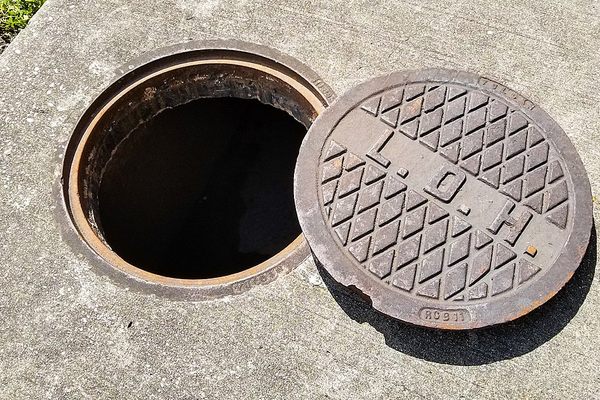Why the Sewer Is the Most Wondrous Everyday Invention
The votes are in, and the winner of Mundane Madness is right beneath your feet.

Mundane Madness is a month-long quest to anoint the most overlooked everyday objects. Also check out the original call for entries, and how Round 1, Round 2, Round 3, and Round 4 went down.
In the end, our search for the most marvelous everyday invention came down to paper and the sewer. One is everywhere, from notebooks to contracts, libraries to banks. The other is less visible but also ubiquitous, far beneath city streets. Save for manhole covers, the asphalt doesn’t carry many hints about the busy world below.
After four rounds of voting, the sewer clinched the competition. It took down roundabouts in the first round (in a surprisingly close vote), then defeated string and can openers, before finally cruising past its last challenger.
A few readers told us why they cast their votes the way they did. Brian Perera noted that while it’s possible to bump paper-only transactions to the cloud, there’s, um, no way to outsource waste. At least not yet.
Modern civilization often talks of “going paperless,” but no such movement (pun intended) has arisen for going sewerless. Case closed.
— Brian Perera (@thermoware) March 31, 2018
Hard to argue with that. Ammie E. Harrison, a librarian, chimed in on Twitter to say that, despite multiple literature degrees, a background in information science, and an abiding love of the written word, “I will vote sewer every time.”
Here’s the final bracket:

It’s easy to imagine why a sewer might not get its due: When the system is functioning the way it’s designed to, you don’t even know it’s there. It hides its labor, its scale, and any number of unpleasant smells by design, and gives us the “freedom to forget that the waste goes somewhere,” writes Nicola Twilley in New York Times Magazine.
But when something goes wrong? Heavy rains might cause overflows, pushing waste into lakes or rivers. Small-scale problems might turn your office bathroom noxious. Fatbergs—congealed globs of fat, wet wipes, and more—can obstruct old pipes: Hoary, goopy reminders of what the sewer does for us every day. Flush, woosh, gone.

That’s the drawback of being an everyday invention that’s engineered to be invisible. People may take you for granted. Calvin Hendrick, the chief engineer of the Baltimore Sewerage Commission, was already worried about this in 1909. The installation of the system was wrapping up, and he wondered whether the system was too mundane and hidden to generate the fanfare and wonder it deserved. “The public would be amazed,” he remarked, “if they could realize what has been accomplished … I only wish that the people of Baltimore could see it.”
Modern sewage systems and their forebears have been making cities healthier and less foul for centuries. From the Roman Forum’s Cloaca Maxima (“Greatest Sewer”) to the giant iron balls that clear sludge in Paris’s 19th-century system, sewers are subterranean wonders—underground, and too often overlooked.










Follow us on Twitter to get the latest on the world's hidden wonders.
Like us on Facebook to get the latest on the world's hidden wonders.
Follow us on Twitter Like us on Facebook